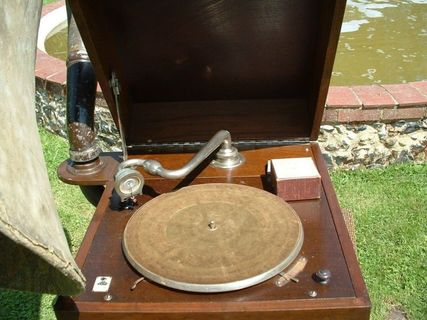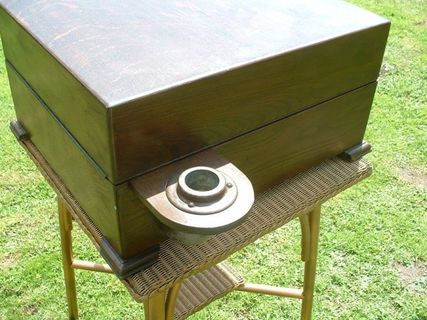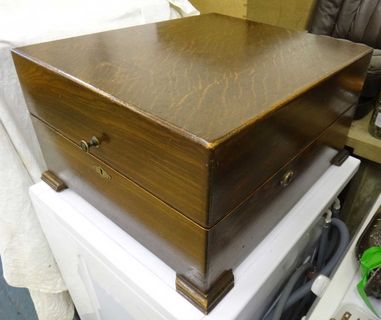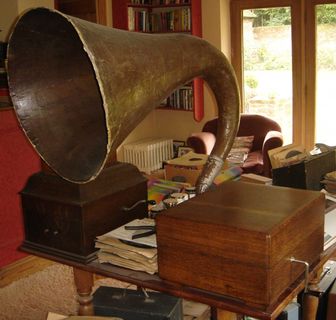EMG Mark IX. 1932...
The Wall Street Crash of 1929 had sent the world into the Great Depression. The Mk IX was the budget model selling at 16 guineas. It had the cheaper “Horseshoe” 2-spring soundbox and a smaller 22” bell diameter horn which had a very short metal support, in time, gravity and humidity caused extreme sagging as in the first example.
The conduit connecting the tonearm to the horn extended out to the side of the cabinet. A heavier horn would have toppled it over.
The other two examples are from Graham Ranking. For comparison purposes, the first is the base of a pre WW2 Mk IX and the last one is Graham's post WW2 Mk IX from 1948.
The Mk IX was introduced in 1932 and along with the Mk IV, did succeed in selling in numbers, saving E.M.G from going under, unlike so many other companies of the era.
At this time E.M.G also undertook the conversion of customer’s existing gramophones, upgrading them to the E.M.G system. Some extraordinary hybrids were produced.
| Model | Tonearm | Motor | Soundbox | Horn | Cabinet | Price | Date |
|---|---|---|---|---|---|---|---|
| E.M.G Mk IX | Wilson Swan Neck | Collaro D30, Garrard 10B or Garrard U5 Electric | EMG Horseshoe 2-Spring | Davey Isophonic 22" Bell | Veneered Ply or solid oak with inset veneered top | Oak-16 guineas | 1932 |








